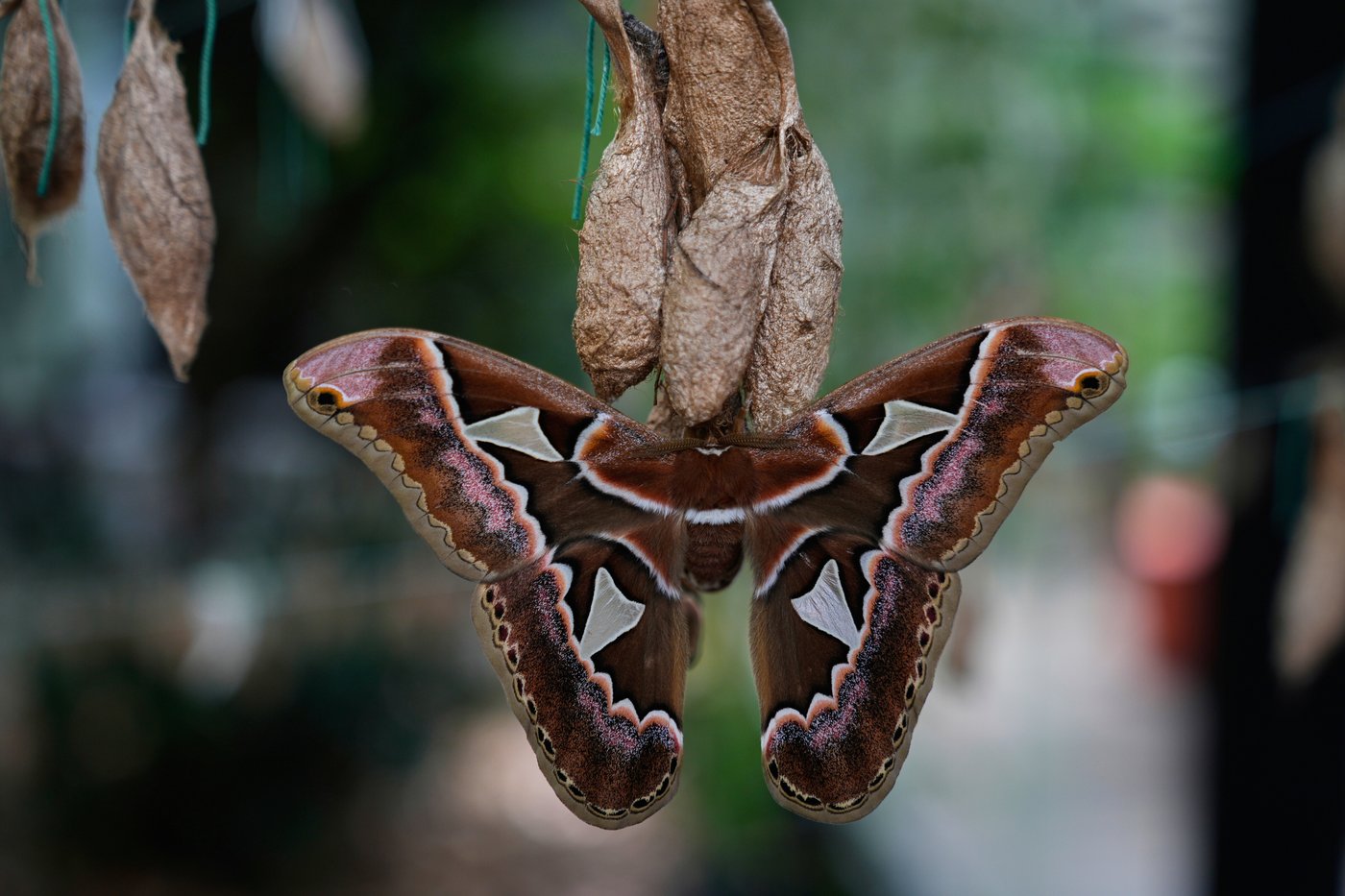Elevate your local knowledge
Sign up for the iNFOnews newsletter today!
Sign up for the iNFOnews newsletter today!
Selecting your primary region ensures you get the stories that matter to you first.

MEXICO CITY (AP) — Two moths the size of a hand, their wings patterned with brown and pink around four translucent sections, mate for hours hanging from a line alongside cocoons like the ones they emerged from just hours earlier.
“When I get here and find this, I jump with delight,” said María Eugenia Díaz Batres, who has been caring for insects at the Museum of Natural History and Environmental Culture in Mexico City for nearly six decades.
The mating pair of “four mirrors” moths as they’re popularly known in Mexico, or scientifically as Rothschildia orizaba, are evidence that the museum’s efforts to save some 2,600 cocoons rescued from an empty lot were worth the trouble.
The moths, whose numbers have fallen in Mexico City due to urbanization, have cultural relevance in Mexico.
“The Aztecs called them the ‘butterfly of obsidian knives,’ Itzpapalotl,” Díaz Batres said. “And in northern Mexico they’d fill many of these cocoons with little stones and put them on their ankles for dances.”

These cocoons arrived at the museum in late December.
“They gave them to us in a bag and in a box, all squeezed together with branches and leaves, so my first mission was to take them out, clean them,” Díaz Batres said.
Mercedes Jiménez, director of the museum in the capital’s Chapultepec park, said that’s when the real adventure began since they had never received anything like this before.
Díaz Batres had the cocoons hung in any place she thought they might do well, including her office where they hang from lines crisscrossing above her table. It has allowed her to watch each stage of their development closely.
The moths only survive for a week or two as adults, but they give Díaz Batres tremendous satisfaction, especially when she arrives at her office and new moths “are at the door, on the computer.”

So she tries to help them “complete their mission” and little by little their species recovers.


This site is protected by reCAPTCHA and the Google Privacy Policy and Terms of Service apply.
Want to share your thoughts, add context, or connect with others in your community?
You must be logged in to post a comment.